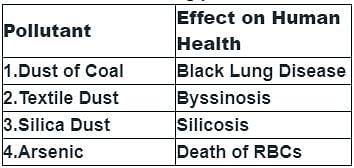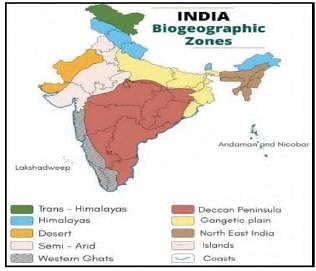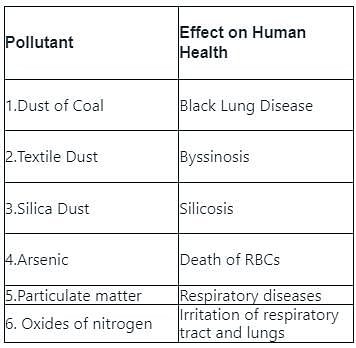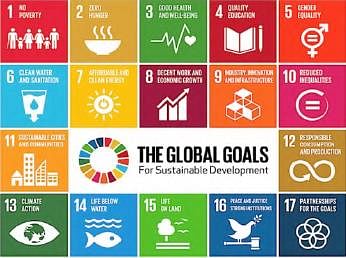Practice Test: Environment- 2 - UPSC MCQ
30 Questions MCQ Test Mock Test for UPSC Prelims 2025 - Practice Test: Environment- 2
Which of the following are major sources of soil pollutants in India?
- Agricultural waste
- Fertilisers and pesticides
- Industrial waste
- Electronic waste
Select the correct answer using the code given below.
Which of the following tribes are involved in the conservation of tigers in Nagarjunasagar Srisailam Tiger Reserve (NSTR)?
| 1 Crore+ students have signed up on EduRev. Have you? Download the App |
Consider the following statements about the Integration of Sikkim:
- Sikkim was ruled by the Namgyal dynasty before it become a part of India.
- A plebiscite on abolishing the monarchy was held in Sikkim in 1975.
- The 36th Constitutional Amendment Act was passed in Parliament to recognize Sikkim as a state.
How many of the above statements are correct?
Consider the following organisms:
- Escherichia coli
- Enterococcus faecalis
- Salmonella typhi
Which of the organisms given above are present in contaminated water?
With reference to the rules regarding 'recusal', consider the following statements:
- It is the act of abstaining from participation in an official action due to a conflict of interest of the judges.
- Judges (Protection) Act, 1985 has provisions regarding the practice of judicial recusals.
Which of the statements given above is/are correct?
Consider the following statements regarding the Sustainable Development Goals (SDGs):
- The SDGs are 17 sets of goals adopted under the Rio Declaration.
- The Ministry of Environment, Forest and Climate Change coordinates India’s SDG implementation.
- The SDG India Index is released by the NITI Aayog in association with International Monetary Fund.
Which of the statements given above is/are not correct?
With reference to the Environment Impact Assessment, consider the following statements:
- Environmental Clearance (EC) has been made mandatory for modernisation of any activity or for setting up new projects under Environmental (Protection) Act 1986.
- It provides an exemption from the EIA requirements to certain industries based on the investment value of their projects.
Which of the statements given above is/are correct?
“Endosulfan” considered to be a carcinogen, neurotoxin and genotoxin, is most likely used in which of the following?
It is one of the biogeographic zones of India.The tropical evergreen forests occupy about one-third of the total area of this zone. About two-thirds of India’s endemic plants are confined to this region. Grizzled Squirrel is restricted to a few forests in this zone.
Which of the following biogeographic zones of India is described in the above passage?
Consider the following pairs:

Which of the above-given pair/s is/are correct?
Which of the following statements best describes the term 'bioprospecting'?
Consider the following statements with respect to National Adaptation Fund For Climate Change (NAFCC):
- It was launched in 1992 as a result of the earth summit negotiations.
- The National Bank for Agriculture and Rural Development (NABARD) is the National Implementing Entity (NIE).
Which of the statements given above is/are correct?
Consider the following statements regarding the Polar Stratospheric Clouds (PSC):
- PSCs are readily formed in the extreme cold winters of the Antarctic atmosphere.
- Ozone is destroyed in Antarctica at the maximum rate during the winters due to the abundance of PSCs.
Which of the statements given above is/are correct?
Consider the following compounds:
- Chlorofluorocarbons
- Hydrochlorofluorocarbons
- Methyl Bromide
- Hydrofluorocarbons
How many compounds given above are ozone-depleting?
Consider the following statements in relation to Pradhan Mantri Jan Vikas Karyakram (PMJVK):
- It is a central sector scheme.
- Its objective is to enhance the basic infrastructure facilities and socioeconomic amenities for the minority communities.
- Projects under it are implemented and managed by the concerned State/ Union Territory government.
How many of the statements given above are correct?
Consider the following statements:
- Statement-I: Debt for Climate Swaps is an agreement where a creditor forgoes a portion of the debtor's foreign debt or provides debt relief in exchange for the debtor's commitment to invest in a specific environmental project.
- Statement-II: Many developing nations are facing issues of rising debt loads, climate change, and nature loss due to such agreements.
Which one of the following is correct in respect of the above statements?
With regard to the functioning of the National Green Tribunal, consider the following statements:
- It has been established under the Wild Life (Protection) Act, 1972 for effective and expeditious disposal of cases relating to environmental protection.
- The tribunal is not bound by the procedure laid down under the Code of Civil Procedure, 1908.
Which of the statements given above is/are correct?
Consider the following statements:
- Statement-I: Ocean acidification is detrimental to coral reefs.
- Statement-II: An increase in acidification slows the rate at which calcium carbonate is generated.
Which one of the following is correct in respect of the above statements?
Which of the following mechanisms have been formulated under the Kyoto Protocol?
- Clean Development Mechanism
- Joint Implementation
- Intended Nationally Determined Contributions
- International Emission Trading
Select the correct answer using the code given below.
Consider the following pairs with reference to Sustainable Development Goals (SDGs):
SDG Number : Goal
- SDG 3 : Gender Equality
- SDG 9 : Access to Clean Energy
- SDG 13 : Sustainable Cities and Communities
- SDG 16 : Peace Justice and Strong Institutions
How many pairs given above are correctly matched?
Consider the following types of ecological pyramids:
- Pyramids of number
- Pyramid of biomass
- Pyramids of energy
How many of the pyramids given above can never be inverted in shape?
Consider the following statements:
- The Earth is currently believed to be undergoing the sixth mass extinction.
- The current species extinction rates are estimated to be several times faster than in pre-human times.
Which of the statements given above is/are correct?
Consider the following statements regarding Trade Records Analysis of Flora and Fauna in International Commerce (TRAFFIC):
- It is a wildlife trade monitoring network established jointly by the World Wide Fund for Nature (WWF) and the International Union for Conservation of Nature (IUCN).
- It is concerned with the monitoring of both the legal as well as illegal trade in wildlife across the world.
Which of the statements given above is/are correct?
Which of the following statements best describes the Chemical Oxygen Demand of a water body?
Consider the following pairs:
Type of Biodiversity: Measure of
- Alpha diversity : Species richness in a particular ecosystem
- Beta diversity : Total biodiversity within an entire region
- Gamma diversity : Change in amount of species between the ecosystems.
How many of the above pairs are correctly matched?
In the context of Biomagnifi cation, consider the following statements:
1. Biomagnific ation refers to decrease in concentration of the toxicant at successive trophic levels.
2. This happens because a toxic substance accumulated by an organism can be metabolised or excreted, and is thus passed on to the next higher trophic level.
Which of the statements given above is/are correct?
Consider the following statements:
- The high concentrations of Dichlorodiphenyltrichloroethane (DDT) disturb calcium metabolism in birds.
- It causes thinning of eggshell and their premature breaking, eventually causing decline in bird populations.
Which of the statements given above is/are correct?
In the context of Eutrophication, which of the following statements is/are correct?
1. Eutrophication is the natural aging of a lake by nutrient enrichment of its water.
2. With time, streams draining into the lake introduce nutrients such as nitrogen and phosphorus.
3. As the lake’s fertility decreases, plant and animal life burgeons, and organic remains begin to be deposited on the lake bottom.
Select the correct answer using the codes given below.
Which of the following statements is/are correct?
1. Marsh plants take root in the shallows and begin to fil l in the original lake basin.
2. The lake gives way to large masses of fl oating plants (bog), which converting into land.
Select the correct answer using the codes given below.
Consider the following statements regarding Marshlands:
Statement-I: The Sundarbans is a vast mangrove forest and is shared between India and Bangladesh.
Statement-II: It is formed by the confl uence of the Ganges, Brahmaputra, and Meghna rivers, creating a unique ecosystem of saltwater and freshwater mix.
Which one of the following is correct in respect of the above statements?
|
16 videos|4 docs|70 tests
|
|
16 videos|4 docs|70 tests
|




















